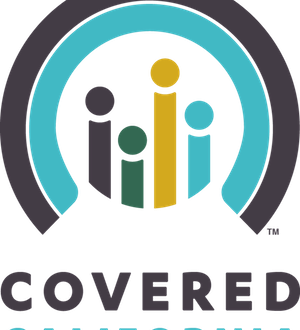In a critical period of Obamacare outreach, will more black consumers take advantage of benefits available through the California healthcare exchange?
By McKenzie Jackson, California Black Media
When Andre Andrews signed on to the Covered California website on February 7, he was in the midst of coping with a medical emergency.
A week before, Andrews had been the victim of a hit-and-run. The Burbank resident was walking his bike up the side of a street late one night, when he was suddenly struck by a passing motorist who never bothered to stop. The impact left him with missing teeth, lacerations to his face and an ambulance bill alone of over $1,000.
Uninsured since leaving a job in early January, Andrews has already paid $500 of the bill, but he now feels more secure because of his coverage eligibility under the Affordable Care Act, also known as Obamacare, it is made available in this state through Covered California, which Andrews is confident will help him better manage medical expenses and aid with any future health problems he might experience.
“I never really go to the doctor, but I still need health insurance, especially since this happened,” said Andrews. “All these other healthcare insurance providers online are expensive.” For the 30-year-old, what he found through Covered California “is less expensive. I’m one of those guys that thought nothing would ever happen. But clearly it can. You don’t know what is going to happen.”
More than 11,000 black Californians, and potentially millions more across the United States, can identify with the peace of mind Andrews enjoys today as a result of Obamacare. Following a difficult rollout, there has been a surge of enrollments over the last two months; on January 25, the Obama administration announced that three million Americans had signed up for private health plans under the law, including 800,000 in the month of January alone.
California accounts for 625,000 of those enrollees, but thus far only 3.1 percent, or 11,153, are African-Americans, despite blacks being nearly seven percent of California’s population. That is compared with whites, who have accounted for 54.7 percent, or 199,186, of Obamacare enrollees, tops in the state.
Obamacare ensures that all Americans have access to affordable health insurance, by offering discounts or tax credits on health insurance plans and enlarging the Medicaid assistance program to include more individuals that can’t afford healthcare in their budgets.
A household with an income between one and four times the Federal Poverty Level is ideal for receiving the health insurance discounts. Despite common misperceptions, that only single mothers can qualify for healthcare assistance, for example, or that a family must be in a deep poverty to get help, even individuals who earn too much to qualify for discounts and tax credits are entitled to buy plans through Covered California.
In California and across the nation, individuals with Obamacare have benefits in 10 categories including ambulatory patient services, emergency services, hospitalization, maternity and newborn care, mental health and substance use disorder services, including behavioral health treatment and prescription drugs. The health plan also helps cover rehabilitative and habilitative services and devices, laboratory services, preventive and wellness services and chronic disease management, and pediatric services such as dental and vision care.
Among those who have yet to enroll in a healthcare plan, despite the fact that he would almost certainly be eligible for coverage and/or subsidies, is 30-year-old Clint Thompson of Santa Monica. Thompson, who recently returned to California from New York City, is debating whether to enroll in a plan through Covered California, or try the insurance offered through his employer, a clothing retailer.
“I’m weighing the options of each,” said Thompson, “but I really haven’t looked as in-depth as I should.”
Thompson and others like him, those who remain on the fence about obtaining healthcare coverage, have until the March 31 open enrollment deadline to either enroll in a plan of some kind or be subject to a penalty.
Covered California this month launched an outreach campaign covering 21 counties across the state, Kern, Orange, Riverside, Sacramento, San Diego, Santa Clara and Ventura among them, that includes opportunities for free enrollment assistance at libraries, community centers and other locations. Opportunities to enroll and information about outreach locations can be found on the website at www.coveredca.com.
Although online enrollment remains a viable and popular option, Covered California Executive Director Peter V. Lee said many people are more comfortable with face-to-face discussion.
“Many people want to speak with an expert in person in their own language,” he said recently, “rather than over the phone or on the Internet when making such a personal decision about health insurance.”
Next week: As a Covered California deadline approaches, African-American consumers, healthcare experts and advocates assess the effectiveness of healthcare outreach to the black community.
 Westside Story Newspaper – Online The News of The Empire – Sharing the Quest for Excellence
Westside Story Newspaper – Online The News of The Empire – Sharing the Quest for Excellence



